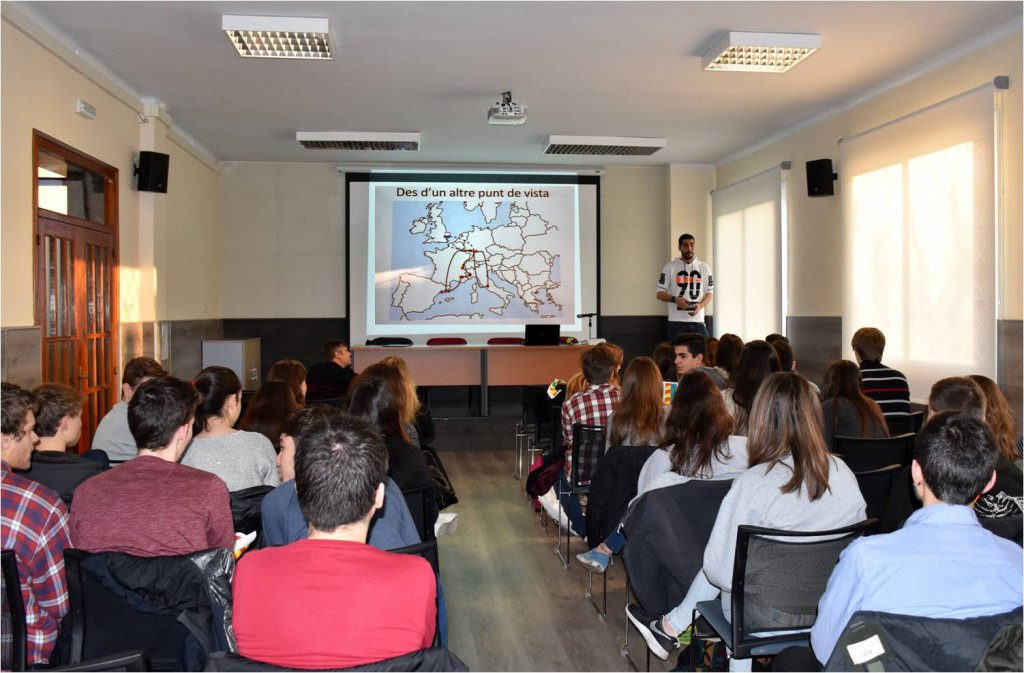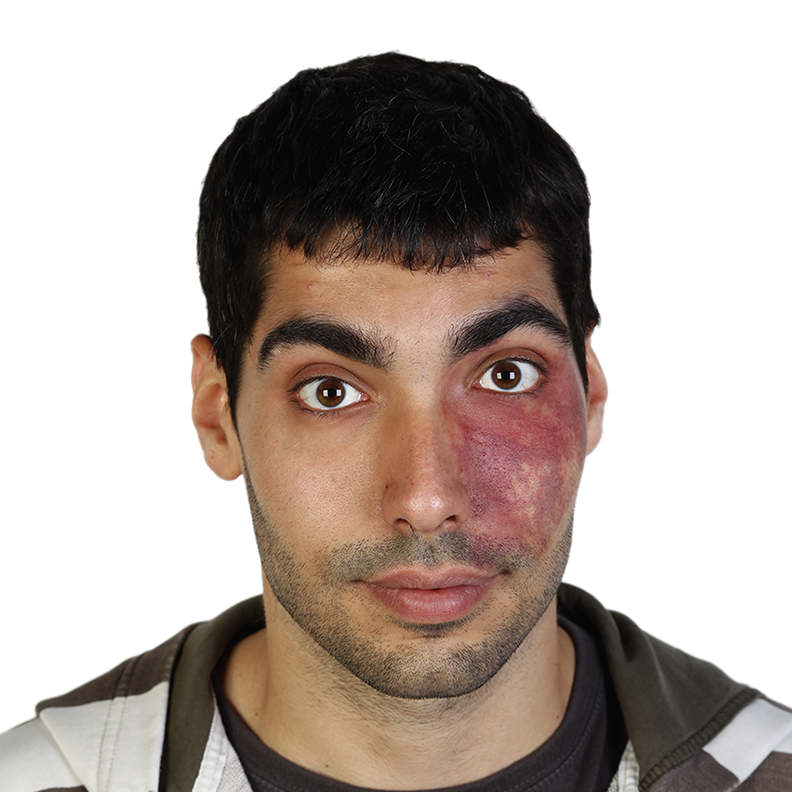EMBL School Ambassador Enric Mila Vilalta
Country: Spain
Profile
Hi! My name is Enric. I come from Tarragona, a small city in Catalonia, which is in the Northeastern part of Spain. I am a first year PhD student in Anne Claude Gavin’s group in the SCB Unit at EMBL Heidelberg. For my PhD project I work with human Lipid Transfer Proteins (LTPs), and I am trying to characterize their unknown lipid partners and to comprehend the biochemical mechanisms behind these lipid transporters inside the cell.
I studied biochemistry at the University of Barcelona where I developed a lot of interest in regulation and control of metabolism. Then I joined a lab in the biochemistry department that was studying the dysregulation of metabolism in cancer and the effects of this dysregulation on the proliferation, invasion and stemness of cancer cells.
After this experience, I took an Erasmus Mundus Master’s Program at the Molecular Biotechnology Center (MBC) at the University of Turin, Italy and at the Université Joseph Fourier in Grenoble, France. In this program, I continued working on cancer, focusing on targeting a key enzyme in the regulation of glutamine.
One thing I find amazing here at EMBL is that we talk about science (almost) all day long and we do not get tired of it. In this way, we can step away from our own topics and projects and then come back with new ideas or approaches. But I also understand that science can be difficult for people that are not used to a research environment and that this may create a kind of barrier that we need to overcome. That is why we need to transfer our knowledge and discoveries to society, starting by raising more scientific interest in young people and educating them to build a more science-friendly society.
Diary
EMBL School Ambassador visit to a school in Tarragona (Spain) in December 2015
More or less a month before the Christmas break 2015 a teacher from my high school sent me an email asking if I would like to go to the second year high school student class to give a talk about my experiences at university and the countries I have been to during my studies.

I was really happy to receive that email as I always wanted to present such a talk in my former school. When I was a high school student, I received advice mostly from friends’ older siblings, but never at school and I therefore think it is a good idea to help students forming their own picture about a scientific career.
On the 22nd of December 2015 I was once again in my former high school in the city of Tarragona. This time at the professor’s stand and in front of 40 students. They were from different high school tracks and I had a mix of students coming from science, arts and social science tracks. I started by talking about what I studied and where, why I chose to go to those places and what my final goal(s) were. I mostly pointed out that the world is full of opportunities but one has to proactively seek and take them. I asked some of the students if they were clear about what they wanted to do after high school and all of them wanted to go to University, either in the same city or in another city. Despite that only half of them knew clearly which degree to take. I told them that 7 years ago I had the same doubts – or even more! I said that the best way to clear these doubts is to keep asking. Back when I was in high school I spent some afternoons going to the Universities around my area and talked to students of the courses I was interested in (biochemistry, chemistry, biotechnology or physics). I informed the class that many universities offer summer courses for high school students which have lots of activities related to each field, and it can be very helpful to participate in them.
Some of the students were interested in biological sciences and they asked about the differences between the many degrees within biological sciences that have appeared in the last decade. I explained to them that it depends on the aim of each degree in the different universities. Most of them have a really similar background and they mostly differ in the last years. Some of them focus more on basic research, others on pharmaceutical industry, others on biodiversity and ecology or on biotech industries and genetic engineering.
One student asked me why I chose another university over the local one and if I would advise them to do so as well. That was an interesting question to answer as it allowed me to tell them that they should check every university around as not all of them have the same focus at the very end of the bachelor. I remarked that is not to say that some universities are better than others and that the students have to know about their specific interests and go to the best university for them. But at the same time they shouldn’t worry a lot about this as many of the universities cover most of the specialties. In addition, I told them not to be afraid to go to a university far from their home, and that there exist several programmes for scholarships. I encouraged them to go abroad as it is important to realise the diversity of the world, which things are not the same in different places and it raises your cultural awareness. Then I also told them that English is essential not only in science but in general when you are abroad and knowing other languages helps a lot, too.
Finally, I explained my research interests and my project at EMBL on human Lipid Transfer Proteins (LTP). For those who were not familiar with biology I started by explaining that lipid membranes are the physical barrier between a cell and the outside, and that there are many other types of membranes inside a cell. I told them that all of those membranes are made of lipids that have similar properties as cooking oil – which also doesn’t mix easily with water. There must be a transport mechanisms that carries these lipids from the inside of the cell to those membranes. I also explained that there is not much knowledge about this transport and that there are mainly two mechanisms by which this happens. For one of them, the lipids are carried within vesicles that are like those lipid droplets they see when they mix oil with water. I am interested in the other mechanism where these Lipid Transfer Proteins capture a lipid molecule and deliver it to the membrane just like the Pacman game, but without actually eating the lipid, but rather carrying it instead.
At the end of my visit, I gave each of them a copy of a DNA origami and we all built it together. Some of them did not know what a DNA molecule looked like so it was a cool visual example to explain what DNA represents and the functions that it has.

